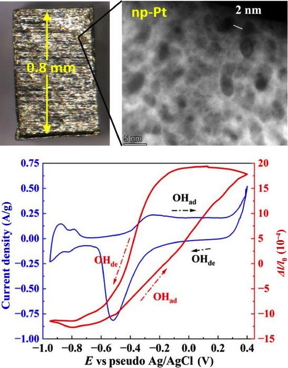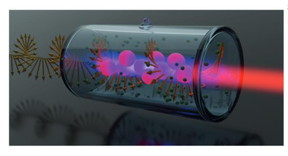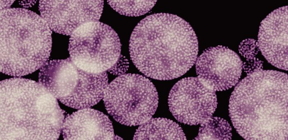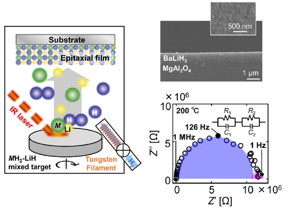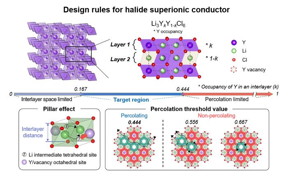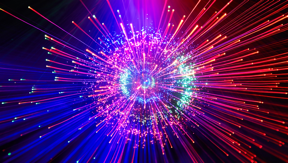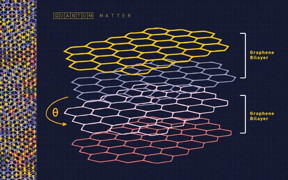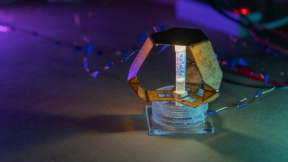Home > Press > Finding quantum order in chaos
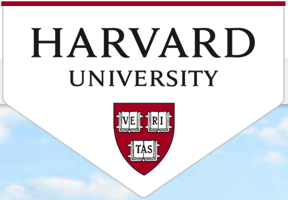 |
Abstract:
If you zoom in on a chemical reaction to the quantum level, you’ll notice that particles behave like waves that can ripple and collide. Scientists have long sought to understand quantum coherence, the ability of particles to maintain phase relationships and exist in multiple states simultaneously; this is akin to all parts of a wave being synchronized. It has been an open question whether quantum coherence can persist through a chemical reaction where bonds dynamically break and form.
Finding quantum order in chaos
Cambridge, MA | Posted on May 17th, 2024
Now, for the first time, a team of Harvard scientists has demonstrated the survival of quantum coherence in a chemical reaction involving ultracold molecules. These findings highlight the potential of harnessing chemical reactions for future applications in quantum information science.
“I am extremely proud of our work investigating a very fundamental property of a chemical reaction where we really didn’t know what the result would be,” said senior co-author Kang-Kuen Ni, Theodore William Richards Professor of Chemistry and Professor of Physics. “It was really gratifying to do an experiment to find out what Mother Nature tells us.”
In the paper, published in Science, the researchers detailed how they studied a specific atom-exchange chemical reaction in an ultra-cold environment involving 40K87Rb bialkali molecules, where two potassium-rubidium (KRb) molecules react to form potassium (K2) and rubidium (Rb2) products. The team prepared the initial nuclear spins in KRb molecules in an entangled state by manipulating magnetic fields and then examined the outcome with specialized tools. In the ultra-cold environment, the Ni Lab was able to track the nuclear spin degrees of freedom and to observe the intricate quantum dynamics underlying the reaction process and outcome.
The work was undertaken by several members of Ni’s Lab, including Yi-Xiang Liu, Lingbang Zhu, Jeshurun Luke, J.J. Arfor Houwman, Mark C. Babin, and Ming-Guang Hu.
Utilizing laser cooling and magnetic trapping, the team was able to cool their molecules to just a fraction of a degree above Absolute Zero. In this ultracold environment, of just 500 nanoKelvin, molecules slow down, enabling scientists to isolate, manipulate, and detect individual quantum states with remarkable precision. This control facilitates the observation of quantum effects such as superposition, entanglement, and coherence, which play fundamental roles in the behavior of molecules and chemical reactions.
By employing sophisticated techniques, including coincidence detection where the researchers can pick out the exact pairs of reaction products from individual reaction events, the researchers were able to map and describe the reaction products with precision. Previously, they observed the partitioning of energy between the rotational and translational motion of the product molecules to be chaotic [Nature 593, 379-384 (2021)]. Therefore, it is surprising to find quantum order in the form of coherence in the same underlying reaction dynamics, this time in the nuclear spin degree of freedom.
The results revealed that quantum coherence was preserved within the nuclear spin degree of freedom throughout the reaction. The survival of coherence implied that the product molecules, K2 and Rb2, were in an entangled state, inheriting the entanglement from the reactants. Furthermore, by deliberately inducing decoherence in the reactants, the researchers demonstrated control over the reaction product distribution.
Going forward, Ni hopes to rigorously prove that the product molecules were entangled, and she is optimistic that quantum coherence can persist in non-ultracold environments.
“We believe the result is general and not necessarily limited to low temperatures and could happen in more warm and wet conditions,” Ni said. “That means there is a mechanism for chemical reactions that we just didn’t know about before.”
First co-author and graduate student Lingbang Zhu sees the experiment as an opportunity to expand people’s understanding about chemical reactions in general.
“We are probing phenomena that are possibly occurring in nature,” Zhu said. “We can try to broaden our concept to other chemical reactions. Although the electronic structure of KRb might be different, the idea of interference in reactions could be generalized to other chemical systems as well.”
####
For more information, please click here
Contacts:
Anne Manning
Harvard University
Copyright © Harvard University
If you have a comment, please Contact us.
Issuers of news releases, not 7th Wave, Inc. or Nanotechnology Now, are solely responsible for the accuracy of the content.
| Related Links |
| Related News Press |
News and information
![]()
Gene therapy relieves back pain, repairs damaged disc in mice: Study suggests nanocarriers loaded with DNA could replace opioids May 17th, 2024
![]()
Oscillating paramagnetic Meissner effect and Berezinskii-Kosterlitz-Thouless transition in cuprate superconductor May 17th, 2024
Physics
Quantum Physics
Possible Futures
![]()
Advances in priming B cell immunity against HIV pave the way to future HIV vaccines, shows quartet of new studies May 17th, 2024
![]()
Aston University researcher receives £1 million grant to revolutionize miniature optical devices May 17th, 2024
![]()
Gene therapy relieves back pain, repairs damaged disc in mice: Study suggests nanocarriers loaded with DNA could replace opioids May 17th, 2024
Discoveries
![]()
Diamond glitter: A play of colors with artificial DNA crystals May 17th, 2024
![]()
Advances in priming B cell immunity against HIV pave the way to future HIV vaccines, shows quartet of new studies May 17th, 2024
![]()
What is “time” for quantum particles? Publication by TU Darmstadt researchers in renowned journal “Science Advances” May 17th, 2024
Announcements
![]()
Diamond glitter: A play of colors with artificial DNA crystals May 17th, 2024
![]()
Oscillating paramagnetic Meissner effect and Berezinskii-Kosterlitz-Thouless transition in cuprate superconductor May 17th, 2024
![]()
What is “time” for quantum particles? Publication by TU Darmstadt researchers in renowned journal “Science Advances” May 17th, 2024
Interviews/Book Reviews/Essays/Reports/Podcasts/Journals/White papers/Posters
![]()
Gene therapy relieves back pain, repairs damaged disc in mice: Study suggests nanocarriers loaded with DNA could replace opioids May 17th, 2024
![]()
Oscillating paramagnetic Meissner effect and Berezinskii-Kosterlitz-Thouless transition in cuprate superconductor May 17th, 2024
- SEO Powered Content & PR Distribution. Get Amplified Today.
- PlatoData.Network Vertical Generative Ai. Empower Yourself. Access Here.
- PlatoAiStream. Web3 Intelligence. Knowledge Amplified. Access Here.
- PlatoESG. Carbon, CleanTech, Energy, Environment, Solar, Waste Management. Access Here.
- PlatoHealth. Biotech and Clinical Trials Intelligence. Access Here.
- Source: http://www.nanotech-now.com/news.cgi?story_id=57485
- :has
- :is
- :not
- :where
- 10
- 17th
- 2021
- 4
- 500
- 7th
- a
- ability
- Able
- About
- above
- Absolute
- accuracy
- accurate
- advances
- against
- agile
- All
- Although
- am
- an
- and
- applications
- approach
- ARE
- artificial
- AS
- b
- back
- BE
- been
- before
- behave
- behavior
- being
- believe
- between
- Bonds
- Break
- broaden
- by
- calculations
- cambridge
- CAN
- capsules
- cell
- Center
- CGI
- Chaos
- chemical
- chemistry
- click
- Co-Author
- coincidence
- Collide
- COM
- comment
- concept
- conditions
- conductivity
- content
- control
- Cool
- could
- Degree
- del
- demonstrated
- describe
- detailed
- detect
- Detection
- develop
- Devices
- different
- distribution
- dna
- do
- down
- drug
- dynamically
- dynamics
- effect
- effects
- Electronic
- employing
- enabling
- end
- energy
- entanglement
- Environment
- environments
- Ether (ETH)
- events
- exact
- examined
- exist
- Expand
- experiment
- extremely
- facilitates
- faster
- Fields
- Find
- finding
- findings
- First
- first time
- flexible
- For
- form
- Forward
- fraction
- Freedom
- from
- fundamental
- Furthermore
- future
- General
- generalized
- gif
- graduate
- grant
- greatly
- Grow
- happen
- Harnessing
- harvard
- Have
- Highlight
- HIV
- hopes
- How
- http
- HTTPS
- idea
- if
- immunity
- implied
- improve
- in
- Inc.
- Including
- individual
- information
- initial
- interactions
- interference
- intricate
- investigating
- involving
- IT
- journal
- jpg
- just
- Know
- lab
- laser
- Level
- light
- like
- Limited
- links
- Long
- Low
- maintain
- MAKES
- manipulate
- manipulating
- map
- mark
- matching
- May..
- means
- mechanism
- Members
- Methodology
- mice
- microscopic
- might
- million
- more
- mother
- motion
- multiple
- nanotechnology
- Nature
- necessarily
- net
- New
- news
- Notice..
- now
- nuclear
- observation
- observe
- observed
- occurring
- of
- on
- open
- Opportunity
- optical
- Optimistic
- or
- order
- Other
- our
- out
- Outcome
- over
- Pain
- pairs
- Paper
- parts
- path
- pave
- people’s
- performance
- phase
- phenomenon
- PHP
- Physics
- pick
- plato
- Plato Data Intelligence
- PlatoData
- Play
- please
- possibly
- Post
- posted
- potential
- Precision
- prepared
- preserved
- press
- Press Release
- previously
- problems
- process
- Product
- Products
- Professor
- property
- propose
- proud
- Prove
- Publication
- published
- Quantum
- quantum information
- quantum particles
- question
- React
- reaction
- reactions
- realistic
- really
- receives
- Relationships
- release
- Releases
- relieves
- remarkable
- Renowned
- repairs
- replace
- research
- researcher
- researchers
- responsible
- result
- Results
- return
- Revealed
- revolutionize
- Ripple
- robots
- roles
- Said
- same
- Save
- Science
- scientists
- Search
- sees
- senior
- several
- Share
- she
- Shows
- simultaneously
- slow
- Soft
- solely
- SOLVE
- sophisticated
- sought
- specialized
- specific
- Spin
- spins
- start
- State
- States
- structure
- Student
- studied
- Study
- submit
- such
- Suggests
- superposition
- surprising
- survival
- Systems
- team
- tech
- technique
- techniques
- tells
- that
- The
- their
- then
- therapy
- There.
- therefore
- These
- they
- this
- Through
- throughout
- time
- to
- tools
- track
- transition
- trapping
- try
- two
- underlying
- understand
- understanding
- university
- us
- uses
- using
- vaccines
- very
- virginia
- warm
- was
- Wave
- waves
- Way..
- we
- WELL
- were
- What
- whether
- which
- william
- with
- within
- Work
- would
- Yahoo
- you
- zephyrnet
- zero
- zoom













